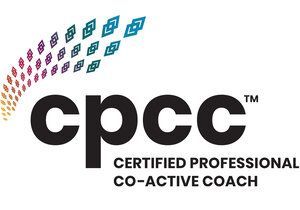How to Support Your Wife During Your First Pregnancy Together

Get it right the first time, guys. It's actually more simple than you think to learn how to be a better husband and make your wife happy when she's pregnant for the first time.
You know how when you get sick, you really want to be nurtured, nourished and dare I say pampered by your partner?
In some cases, you might even wish your mother could stop over with a bowl of your favorite remedy soup.
That kind of love and care that nurses you back to health faster is the same kind of emotional and physical nurturing your wife craves from you during her pregnancy.
However, there's another layer that is bit more complex, and which may be completely oblivious to the naked eye.
She conceived this baby with you.
So while she may want a mother’s care, she really needs to know how much her partner loves her, and that he is willing to do what it takes to nourish her, both physically and emotionally.
She needs your reassurance that is she is completely safe.
Her body is changing daily, and this is alarming to her on multiple levels. She is literally carrying the responsibility of being the sole caretaker of the infant growing inside of her. She is entirely consumed and focused while falling in love with this child, all at the same time.
Consciously or subconsciously, she is measuring your love for her and your ability to care for her and your child during the single most vulnerable time she has yet to experience in her entire life.
To make it easier for you to navigate your daily interactions with your wife or partner from the time you both find out she is pregnant, imagine that she possesses a barometer set to measure your love for her. She keeps it with her at all times, and the temperature changes frequently.
Your goal is simply to do your best to keep her at a comfortable temperature.
After your baby is born, you will have a similar challenge and goal in caring for the little child being brought in your life, so why not practice now with the woman you love and who is carrying your child?
Here is where it gets complicated.
As you approach the special day when your child is due to enter your lives, you are, of course, allowed to feel a range of emotions such as nervousness, apprehension, and elation right alongside your wife.
But don’t forget that during the actual childbirth, she is the champion.
She needs your support. She's carrying the brunt of the trauma to her body and mind, so be there for her.
This also means you must also be ready for any last minute changes she requires.
Even if she spent the last two years talking about no option other than natural birth in a sacred pool of water, she is allowed to change her mind and ask to be given additional support or in some cases even taken to a hospital at the last moment.
Many guys, if put to the task of keeping a woman ‘focused’ through her birthing process with breath work and positive encouragement, take this as the ultimate command and serve out the role dutifully. These men will not be deterred from their assigned mission, and may take on the role of coach, trainer or choreographer as well. They may feel lead to take charge as if they are her bodyguard, even protecting her from nurses and doctors.
All of these intentions are noble, gallant and perhaps even adorable (as a memory many years later), but at that critical moment during labor when your wife's body is crying out for help, just listen to her words.
The piercing but distinguishable words that come out of her mouth between gasps and cries, the words that collide with your auditory sensors yet sound vaguely familiar, between her more primal sounds and curse words, these words are your instructions from her.
If your sensory neurons process, “Epidural NOW,” and you ignore her because pain medication wasn't in the plan, you will pay later — and probably with a marriage counselor present.
I’ve worked with couples who still struggle and seek help decades after the hurts that occurred during nine months of their first pregnancy.
Whether this man couldn’t be bothered to switch restaurant destinations when her cravings suddenly changed en route, or he missed more than one Lamaze class or he was traveling to an “important” business meeting in another country when he his wife's first labor pains appeared, these seemingly small slights to you can cause irreparable damage to your marriage.
Sadly, some couples even break up when the child is just an infant because they are still arguing over disasters which occurred during the pregnancy, birthing stages or labor day.
The nine months of pregnancy, your child's birth day, and the five to six months that follow are critical to your relationship's happiness.
It's also critical for the sake of your child's future to have two loving parents who work together, and hopefully raise this child in the security of a healthy home.
Remember that during her pregnancy, your partner is measuring your love and your ability to care for her and for your family. The results will have significant implications for everything that's next to come over the course of your relationship's future.
During pregnancy, stay focused and stay strong, but remember that she is in charge.
It’s her body, and she has the right to decide what she needs, especially in the critical moments.
Your children, and more importantly your wife, will thank you later in many wonderful and powerful ways.
If you find this article resonates with you or your partner and you would like to speak with someone, please do not hesitate to contact one of our therapists and make an appointment.
About the Author: Dr. Glenn Graves is an American psychologist who has lived and worked in Asia since 2004. The founder and director of Counseling Perspective, Glenn has nearly two decades of experience in providing counselling support to local and expatriate individuals, couples, and families in Singapore. His specialities include child counselling and trauma recovery. Read Full Bio >










